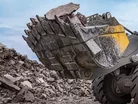John Deere leverages Intel’s AI in manufacturing welding

Piloting a solution that harnesses computer vision to automatically identify common defects in the automated welding processes, John Deere, is leveraging Intel’s artificial intelligence (AI) technology to costly problems in the manufacturing welding process for its manufacturing facilities.
“Welding is a complicated process. This AI solution has the potential to help us produce our high-quality machines more efficiently than before. The introduction of new technology into manufacturing is opening up new opportunities and changing the way we think about some processes that haven’t changed in years,” said Andy Benko, quality director, John Deere Construction & Forestry Division.
Why is John Deere harnessing Intel’s technology?
At 52 of its global factories, John Deere uses the Gas Metal Arc Welding (GMAW) process to weld steel, alongside hundreds of robotic arms creating machines and products.
John Deere identifies that a common challenge in welding is porosity, where cavities in the weld metal are caused by trapped gas bubbles as it cools. If these flaws are found late in the process, the products require re-work or scrapping which can be disruptive and costly for manufacturers.
Traditional methods for detection GMAW defects has been a manual process for John Deere which requires highly skilled technicians.
How Intel is helping John Deere
In its efforts to find solutions to issues that occur in this volume of welding, John Deere is working with Intel, leveraging AI to address weld porosity. The collaboration brings together two of John Deere’s core values - Innovation and quality.
“We wanted to drive technology to make John Deere’s weld quality better than it’s ever been. That’s the commitment we have to our customers, and that’s what they expect from John Deere,” added Benko.
With their partnership the two will combine their expertise to develop an integrated, end-to-end system of hardware and software to generate insights in real-time at the edge.
Using a neural network-based inference engine, Intel and John Deere’s solution logs defects in real-time, and automatically stops the welding process. The solution allows John Deere to correct issues in real time and produce high quality products.
“Deere is leveraging AI and machine vision to solve a common challenge with robotic welding. By leveraging Intel technology and smart infrastructure in their factories, Deere is positioning themselves well to capitalize not only on this welding solution, but potentially others that emerge as part of their broader Industry 4.0 transformation,” concluded Christine Boles, vice president in Intel’s Internet of Things Group and general manager of Industrial Solutions Group.
For more information on manufacturing topics - please take a look at the latest edition of Manufacturing Global.

